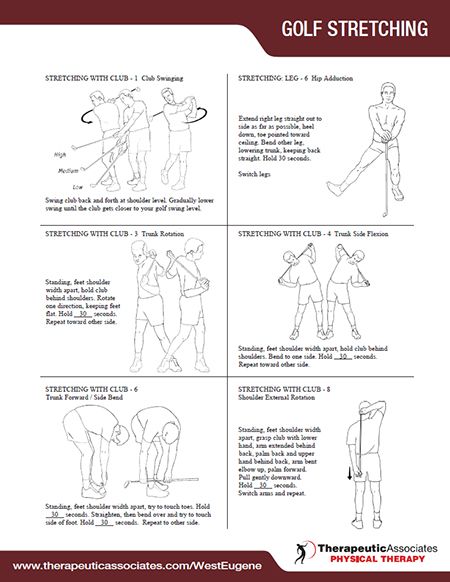 |

As frost delays disappear, days get longer, and an afternoon or evening on the course becomes appealing, keep in mind the following tips to prevent back pains, strains, and aches… and maybe
even shave a few strokes off your season opening score!
EASE INTO THE GOLF SEASON
While this first recommendation may seem obvious, it is probably the most important. Start with nine holes, and don’t make the turn. Your back will notice the difference between holes nine and 18. Let’s put it in “stroke perspective”, say you shoot a 50 on the first 9 holes, and you take two practice swings per shot; that’s already 150 swings. Double that to 300 if you make the turn and play thee full 18 holes. That’s 300 swings, on a back that maybe hasn’t swung a club in the past 6 months . . . think about that. So, play nine holes, and see how you feel the next day. Better yet, hit the driving range for an
hour the day or two before your tee time, to see how you hold up.
WARM UP
It’s always a good idea to warm up before you tee off the first hole, as it is with any sport. Arrive early, and plan on spending at least 10 to 15 minutes warming up on your short game, putting green, and maybe a little driving range…Caution: Don’t overdo the driving range. That will put you in the same predicament explained above. You don’t want to feel like you played a 36 hole tournament rather than an easy nine hole season opener.
STRETCH
A full golf swing requires hip, trunk, and shoulder rotation. Make sure you limber up all areas prior to hitting the ball. Below are a few pictures of general stretches that will mimic movement requirements for a full swing.
CLICK TO DOWLOAD OUR GOLF STRETCHING FLYER (PDF)

80% SWING...EVERY SWING
This concept has been around forever! Think of that first drive on the first tee box, in front of everyone… Swinging at 80% power leads to improved rhythm, lower anxiety, and will help you hit the ‘sweet spot’ more often. It will also keep your ball straighter more often than not. Try it! This single tip will shave strokes off your score!
PLAY SPEED-IER GOLF
Have you heard of Speed Golf? It’s actually a sport where your total score is added to the total time it takes to complete the course. Players spend roughly 10 seconds per shot and never stop moving, turning a typical 5 and half hour 18-hole round into 4 hours or less! While this is not possible on your normal course due to other groups and conventional rules, some serious tips and benefits can be taken away from Speed Golf and applied to your game for instant results: i. Trust your gut. React to the lie, select your club, and take your swing. Don’t overanalyze. Don’t take 3 practice swings per shot. The result will lead to
conservative selections usually, and a more natural rhythm. You will also decrease the total number of swings by 200% or more based on how many practice swings you usually take. Your back will thank you! ii. Skip the cart and walk. Get some total body cardio in and keep muscles moving between forceful swings. You will walk roughly 3- 5 miles per 18 holes based on course, tee box, and how straight you hit.
MANAGE SORENESS
WHAT DO YOU DO IF YOU OVER DO IT?
- Rest from Swinging. Do not play golf the next day.
- Ice, Ice, Ice! If you have a very focal sore spot, icing for 20 minutes, three times a day can help manage acute pain and allow you to still do all that you need to do.
- Keep Moving in General. Oftentimes people with take “rest” advice too literal by lying in bed, which will further stiffen you up in the following days. A body in motion stays in motion. Try to keep moving, enjoy some gentle exercises, or go for a short walk. Allow any muscles that are strained or spasming the opportunity to move gently in daily activities which will in turn allow them to recover more quickly.
- Stretch. Try some of the above stretches to loosen up any tight muscles and help release spasms you might be experiencing.
You should feel better within three to five days based on the inflammatory cascade if you simply over did it. If you are still having trouble or symptoms are worsening, don’t hesitate to come see your Physical Therapist. Evidence shows that patients with acute low back pain recovery more quickly and more fully when seen by their Physical Therapist within two weeks of onset. Plus, we are the experts in body mechanics; we can treat your acute back pain as well as teach you specifically how to prevent it from happening in the future!
Happy Golfing This Spring!
|
 |

